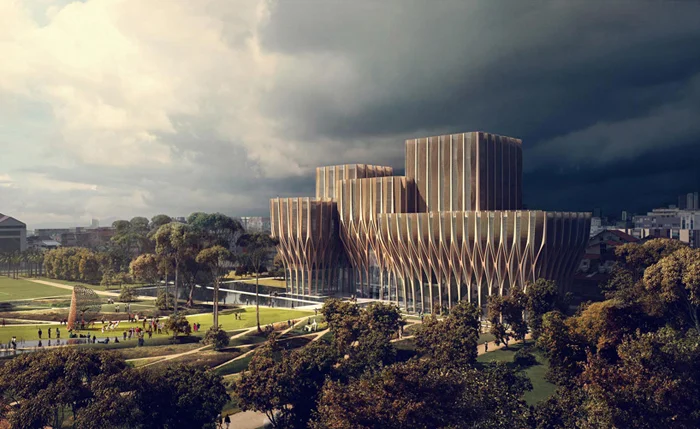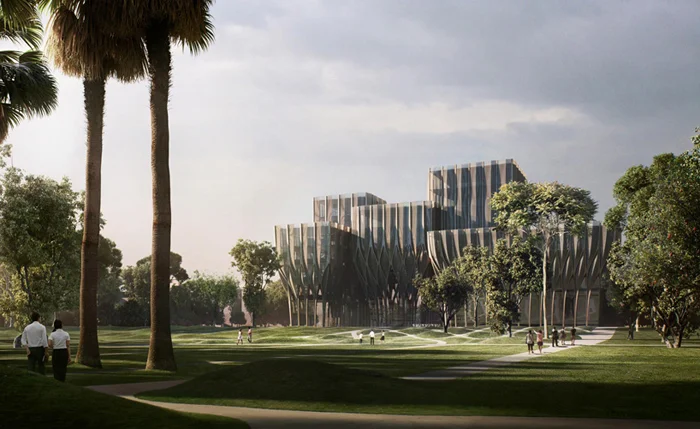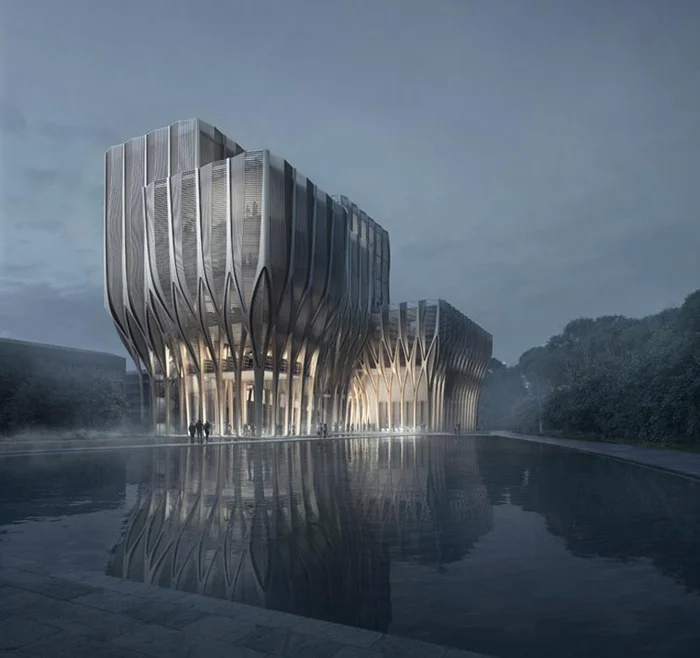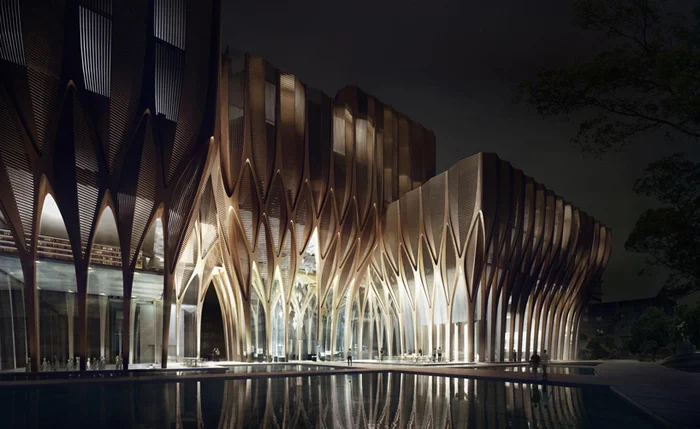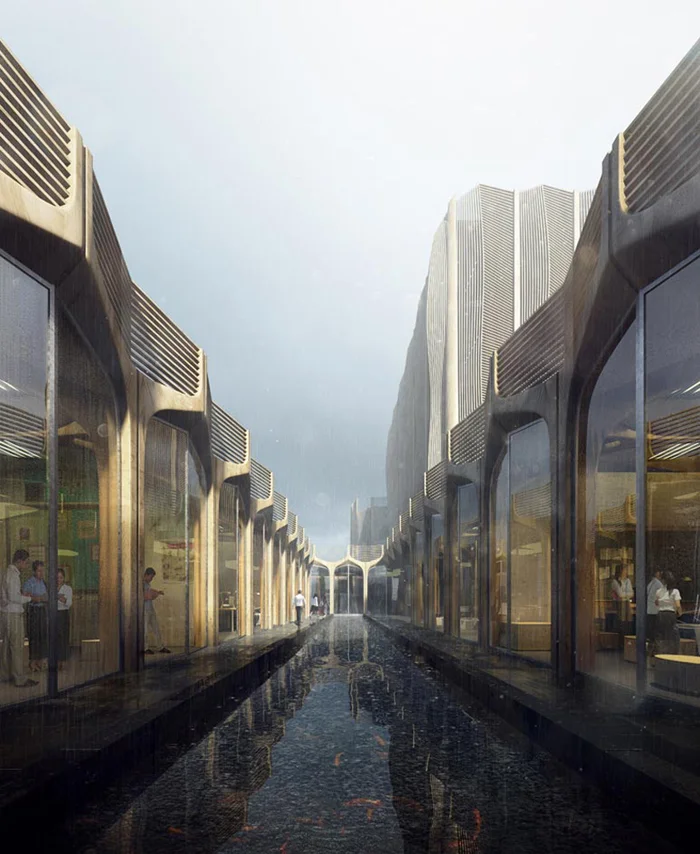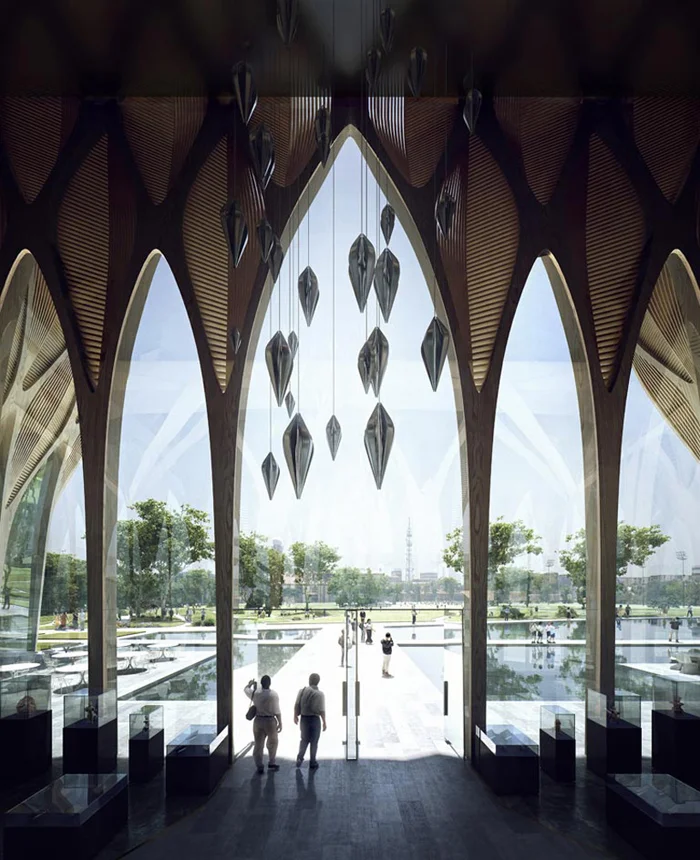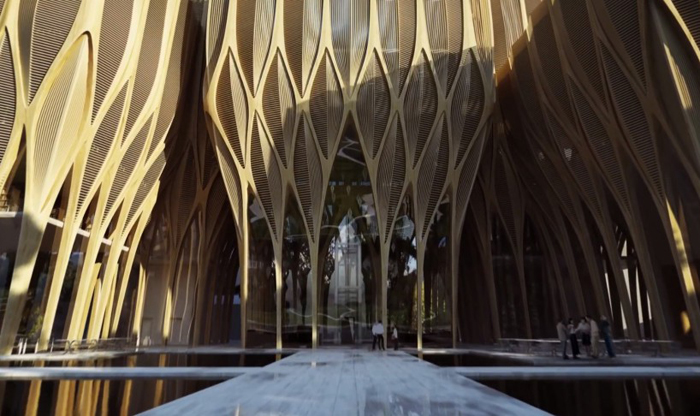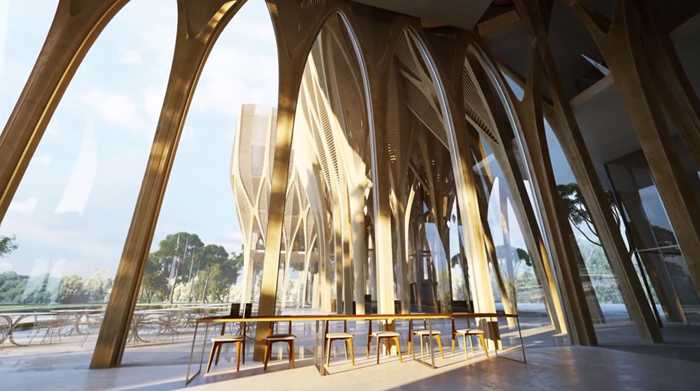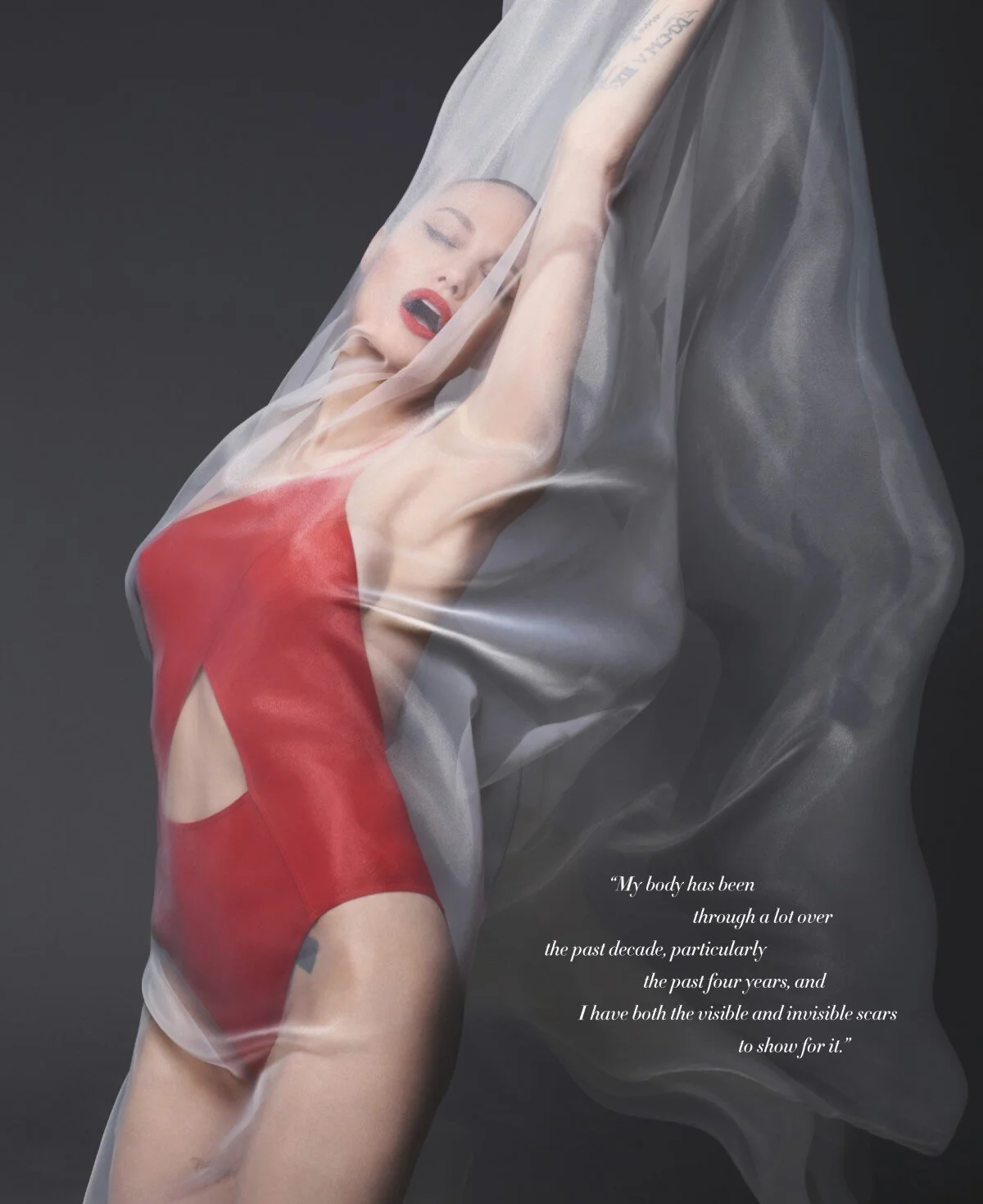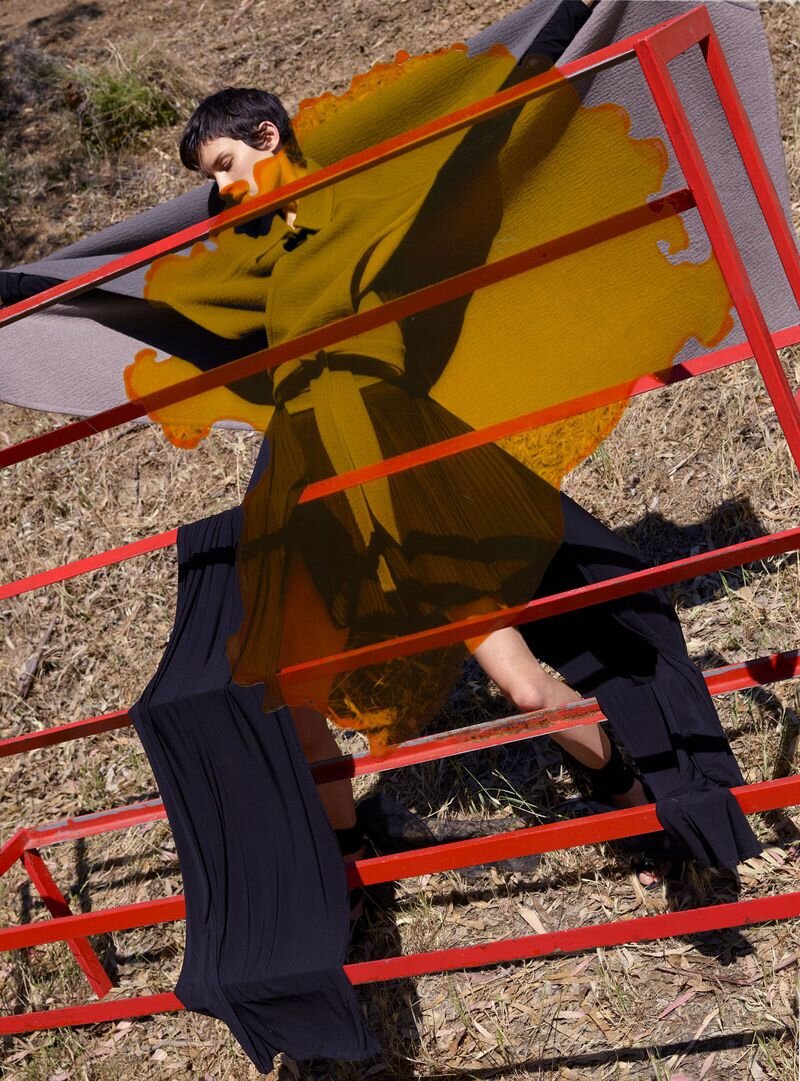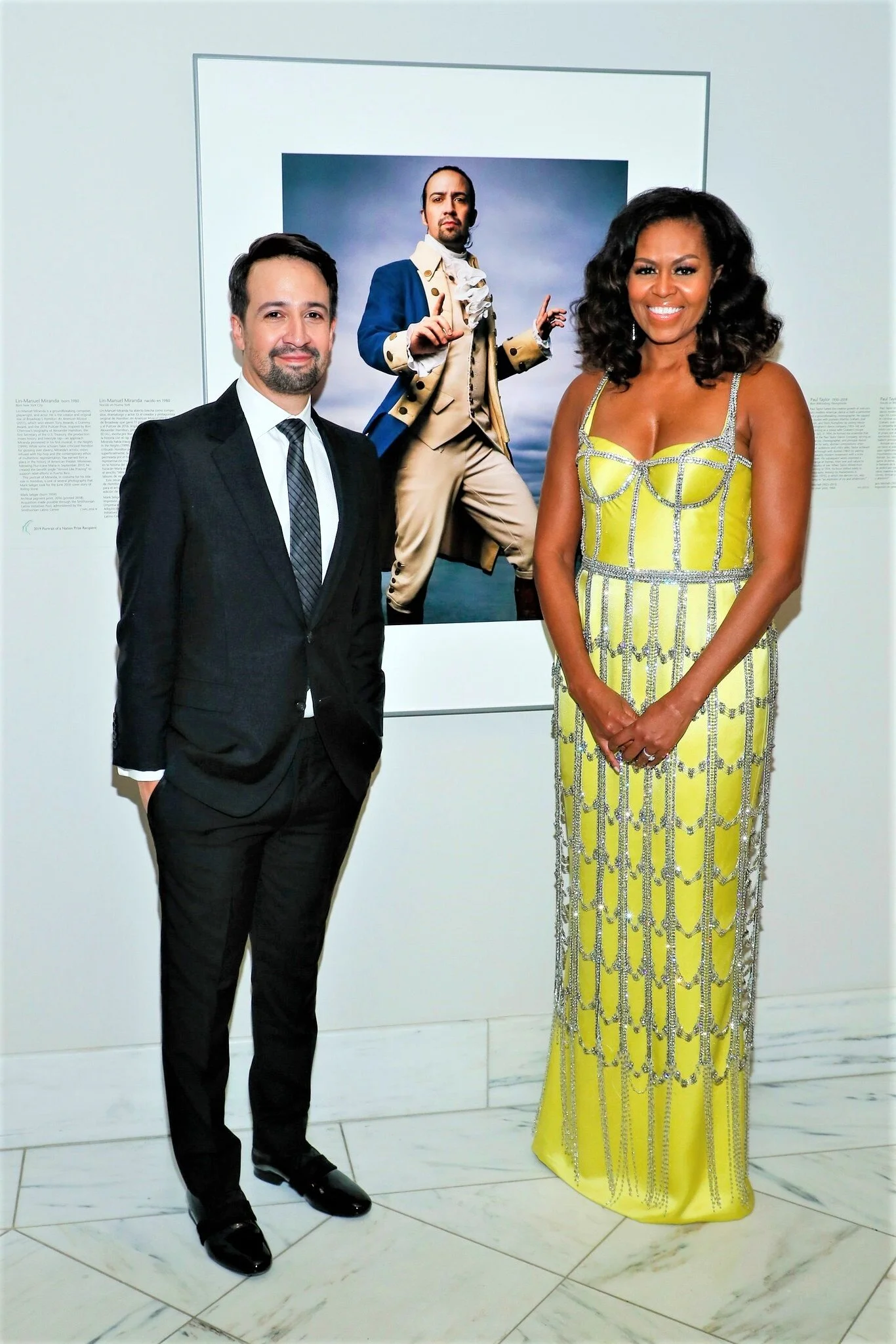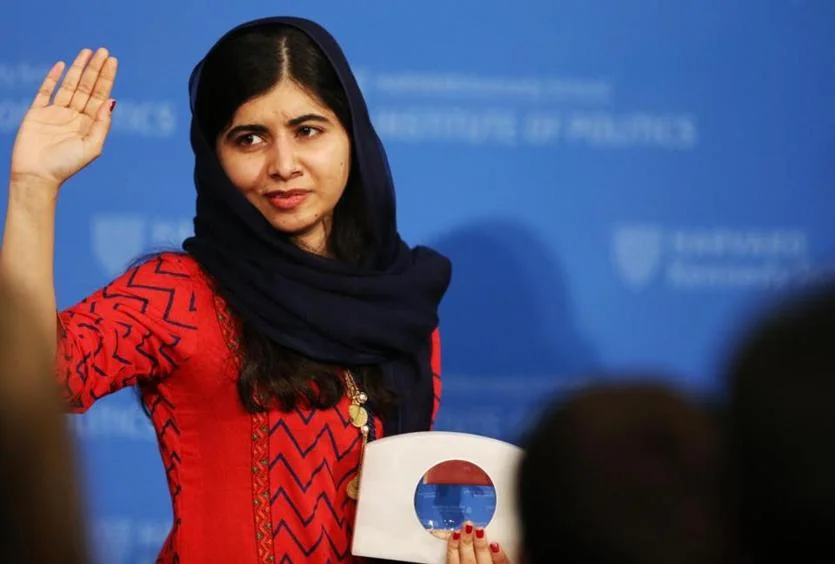Zaha Hadid Unveils Cambodia's Sleuk Rith Institute Designs, Inspired By Angor Wat
/Global powerhouse British architect Zaha Hadid shares her design vision for Phnom Penh, Cambodia’s new Sleuk Rith Institute dedicated to Memory, Justice and Healing around the genocide related to the Khmer Rouge era.The documentation center was established in 1995 and holds archives of nearly one million documents. Over two million people — about 20 percent of the population — lost their lives in Cambodia between 1975 and 1979,
The Institute is Hadid’s office’s first project in Cambodia and also its first ever wooden construction. The building site, adjacent to a public library and law faculty of the Royal University of Law and Economics, was donated by the Cambodian government in 2008.
The almost spiritual, feminine, spider-web nature of Hadid’s design development comprises five locally sourced wooden structures, rising from the ground in an interwoven, upward spiral. The timber support system is meant to reference the ancient temples of Angor Wat.
The Guardian writes:
“This is very different to our other projects,” says Hadid. “It is the first time we have used wood, to create a warmer, softer mood, and in time it will weather and take on a more a natural-looking feel.”
The project is the vision of human-rights activist Youk Chhang, who lost his sister as well as aunts and uncles to Pol Pot’s reign of terror.
The Sleuk Rith Institute library will house the largest collection of genocide-related material in Southeast Asia. The Hall of Contemporary Arts auditorium will house lectures, music, dance, and performance on genocide and leadership issues, coupled with new work from contemporary Cambodian artists. The open air design allows events to move inside and out, depending on weather conditions.
The sexual violence against women that accompanied the Pol Pot regime has gained greater visibility in recent years. Forced marriages were rampant with sexual consummation of the marriage completed under threat of execution. The government sought to increase the Cambodian population from 8 million to 20 million in the shortest possible time.
Zainab Hawa Bangura, the UN Secretary-General’s Special Representative on Sexual Violence in Conflict, listed a number of reasons for this higher profile, including the UN Security Council’s approval of two resolutions: Resolution 1820, passed in 2008, which determined that sexual violence is a weapon of war and could constitute war crimes; and 2013’s Resolution 2106, which requires that countries do more to tackle sexual violence in conflict, including ensuring that their own laws permit prosecutions for such crimes. via
Read Women speak out over Khmer Rouge Sexual Violence Dawn.com (Pakistan)
Chhang says:
“We have to live with a long, dark shadow. We cannot escape it, but we shouldn’t be enslaved by it. I want the institute to bring something new and hopeful, and get us out of the mindset of being victims.”
Pressed by The Guardian concerning questions about Zaha Hadid’s labor practices at the new World Cup stadium in Qatar and human rights abuses connected with the Heydar Aliyev center in Azerbaijan, Chhang responded affirmatively for Hadid.
“You don’t choose an architect because of who they have worked with before,” says Chhang. “Architecture can be a tool to change the vision of a corrupted system. A painter can’t do that, but an architect can.”
“I think architects can sometimes influence the situation for the better,” says Hadid, who has faced criticism for ignoring workers’ conditions. “We are making cultural institutions, which are open for the people.”
Note that architecture critic Martin Filler has publicly apologized for making false accusations about Hadid “not taking responsibility and showing no concern” for alleged worker deaths on her own project for the Qatar 2022 World Cup – the Al Wakrah Stadium. Construction had not started on site when the general comments about worker safety on global construction projects were made by Zaha Hadid in conjunction with her Olympic swimming pool in London.
As a result, the overzealous Filler said:
“I wrote that an ‘estimated one thousand labourers… have perished while constructing her project thus far.’”
“However, work did not begin on the site for the Al Wakrah stadium, until two months after Ms. Hadid made those comments; and construction is not scheduled to begin until 2015. There have been no worker deaths on the Al Wakrah project and Ms. Hadid’s comments about Qatar that I quoted in the review had nothing to do with the Al Wakrah site or any of her projects.”
“I regret the error.”
